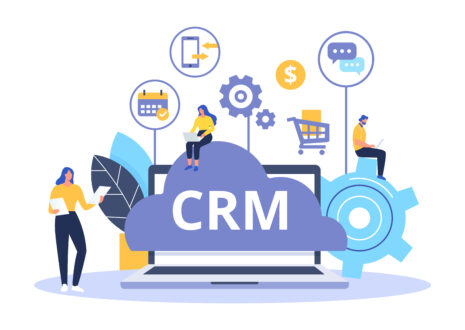Did you know that 85% of consumers use the internet to search for local businesses? That’s one of the main reasons why businesses that use pay-per-click advertising (PPC) prosper in comparison to businesses that use organic advertising.
Today you’ll get your hands on the 7-step framework for effectively spending your advertising budget. So you will maximize your return on ad spend (ROAS).
Before you’ll exactly get to know what PPC is. Here’s why pay-per-click advertising is crucial for you to include in your advertising budget:
- PPC is one of the top three generators of on-page conversions.
- Paid advertising returns $2 for every $1 spent, that’s a 200% ROI rate.
- Traffic brought through PPC advertising yields 50% more conversions than organic advertising.
What is PPC?
Pay-per-click, or PPC, is a form of advertising that allows you to pay a fee every time someone clicks on your ad. For example, the top 2 search results with the word “ad” shown in the figure below indicates pay-per-click advertisements in Google search.

7 steps to maximize your Pay-Per-Click advertising budget
If you follow the following steps precisely, then you can quickly begin to understand where to invest your PPC budget to gain the best ROAS.
Step 1. Define your business objectives
Starting with defining your goals is crucial when it comes to creating an effective campaign strategy. Start to determine your business objectives and break them down in actional goals.
“If you fail to plan, you are planning to fail.” – Benjamin Franklin.
Step 2: Get in the mind of your target audience
Define crystal clear who your target audience is and find that one problem that keeps them awake at night and document it. Create a persona (or ideal customer profile) to visualize your target audience. The better you do the research, the more results you’ll get in the next steps.
Pro tip: Learn how your business can build customer value. So you can leverage the knowledge you have on what keeps your ideal customer awake. If you can link these two factors, your success rate will significantly increase!
Step 3. Keyword analysis
Make a list of potential keywords that resonate with your target audience and focus on the long tail keywords that resonate the best with your audience. Here are 3 things you must do to do proper keyword research:
- Use the planning tool from Google Ads or Ubersuggest to find out what keywords work best for you.
- Document those keywords and bundle them together into different campaigns.
- To make sure the right people will find you. Make sure you filter out the negative keywords. These are the words you don’t want to be found for.
Step 4: Optimize your landing pages
Before you start to create ads, it’s vital to review your website and landing pages first. To run a successful PPC campaign, everything has to be congruent. Here’s why:
When prospects click on your PPC, and the page behind your ad is too slow, too difficult to navigate, or it’s leading to the wrong page, then your prospect will most likely exit shortly.
Step 5: Create ads that transform viewers into action takers
The final destination when it comes to creating your ad is to turn viewers into action takers. That could be a click, follow, view, etc. To maximize the outcome of your ads you have to optimize them. So experiment with different copy, visuals, and media.
Step 6: Analyze and optimize your PPC campaign strategy
To create the highest ROAS, you must constantly analyze and improve your ad campaign.
If you use the right tools (Databox), then most of the work will be done for you.
Focus your analysis on identifying what keywords and targeting features help drive your campaign goals. Here are some metrics you must know in order to analyze your campaign:
– Click-through rate (CTR)
– Conversion rate
– Cost per click (CPC)
– Cost per acquisition
– Return on ad spend
Keeping track of your key metrics over time helps you check what advertisement elements you must improve. It also gives you insights into the most valuable keywords and audience strategies.
Step 7. This is how you maximize your advertising budget
Congratulations! You’ve set goals, done the research, launched a campaign, and installed all the tools to keep track of your metrics. I’ve gathered some expert tricks to maximize your advertising budget.
Bid Adjustments
Bid adjustments help you improve the effectiveness of your advertising budget. It allows you to increase or decrease your bids based on performance and also enables you to make adjustments based on different categories.
Let’s work with an example…
If a keyword doesn’t perform as well on a laptop as on a mobile, you can prevent yourself from bidding too high with a negative bid adjustment. When someone searches the keyword on mobile, your bid will automatically be X% lower than your normal bid.
Conversion Tracking
Your keywords and ads might be good. But if your landing page doesn’t perform, then all your work is for nothing. Because you’ll lose your customers. With conversion tracking code you can monitor where you’ll lose the most customers. The only thing you have to do is to make adjustments.
Keyword Monitoring
Websites like HubSpot help you monitor and manage your whole campaign structure. This highly rated PCP recourse makes it easy for you to keep track of your ad groups, keywords, and A/B tests.
Let’s get started with PPC Advertisement!
In order to create the highest ROAS, spending your advertising budget effectively is vital. These steps will help you in this process. But in order to thrive in this digital age, you must make sure your business model is repeatable and scalable.
A repeatable and scalable business model helps you to maximize your sales, save unnecessary expenses, and create more time to spend on your talents. We’ll tell you all about it in our step-by-step process to create a digital transformation.




